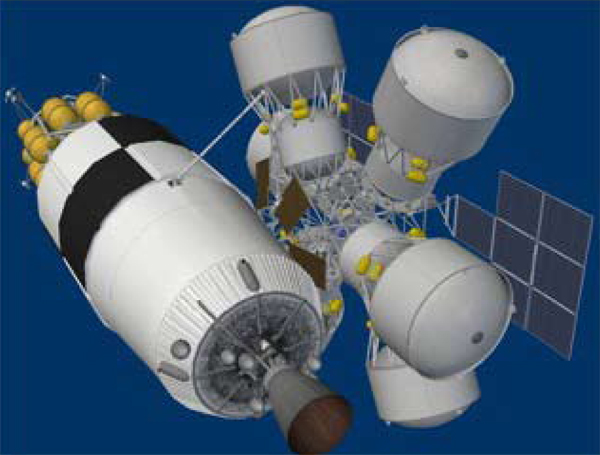NASA Offers $200 Million for Gas Station Demo in Space

Space explorers who need to top off the fuel tanks on the way to the moon or Mars may soon get their orbital refueling stations. NASA has put out the call for a $200 million mission to show how to store and transfer rocket propellants in space.
The idea of space gas stations has floated around – a Canadian company already has plans to launch a flying satellite gas station in 2015. But NASA's latest proposal represents a first step toward supporting future human and robotic missions to destinations such as the moon, asteroids, and Mars, rather than simply refueling satellites in Earth orbit.
NASA wants to look specifically at liquid oxygen and liquid hydrogen, which have powered the main engines of the space shuttle and several commercial rockets. Its proposal calls for "zero boil-off storage" of liquid oxygen, and at least "minimal boil-off storage" of liquid hydrogen.
To get a sense of that challenge, liquid hydrogen requires storage at minus 423 degrees F. The propellant must be shielded from outside heat sources such as the sun or rocket engine exhaust, lest it expand and perhaps cause a tank explosion.
Anyone willing to take on NASA's challenge must also show how to transfer the liquid propellants in the microgravity environment of low-Earth orbit. [Top 10 Life-Changing Inventions]
Still, the U.S. space agency said it would consider a mission costing up to $300 million, but only if the added cost comes with big benefits. Similarly, it may consider missions priced below the $200 million target if they can still do the job.
NASA's commercial partners may also benefit from such refueling stations.
Get the Space.com Newsletter
Breaking space news, the latest updates on rocket launches, skywatching events and more!
Private rocket firm SpaceX currently holds NASA contracts to deliver astronauts and cargo to the International Space Station, but SpaceX chief Elon Musk has also set his sights upon the moon and Mars.
This story was provided by InnovationNewsDaily, a sister site to SPACE.com. Visit SPACE.com for the latest in space science and exploration news on Twitter @Spacedotcom and on Facebook.
Join our Space Forums to keep talking space on the latest missions, night sky and more! And if you have a news tip, correction or comment, let us know at: community@space.com.

Space.com is the premier source of space exploration, innovation and astronomy news, chronicling (and celebrating) humanity's ongoing expansion across the final frontier. Originally founded in 1999, Space.com is, and always has been, the passion of writers and editors who are space fans and also trained journalists. Our current news team consists of Editor-in-Chief Tariq Malik; Editor Hanneke Weitering, Senior Space Writer Mike Wall; Senior Writer Meghan Bartels; Senior Writer Chelsea Gohd, Senior Writer Tereza Pultarova and Staff Writer Alexander Cox, focusing on e-commerce. Senior Producer Steve Spaleta oversees our space videos, with Diana Whitcroft as our Social Media Editor.









